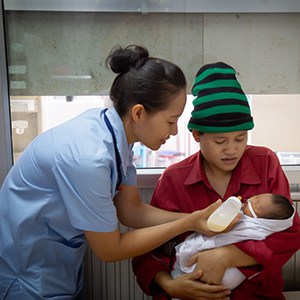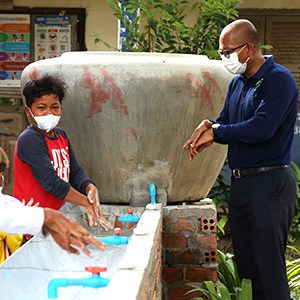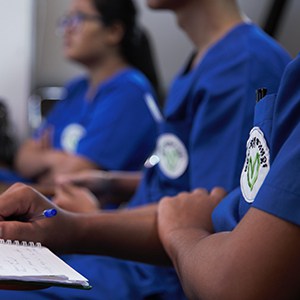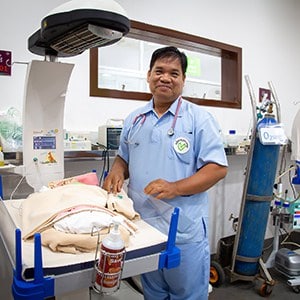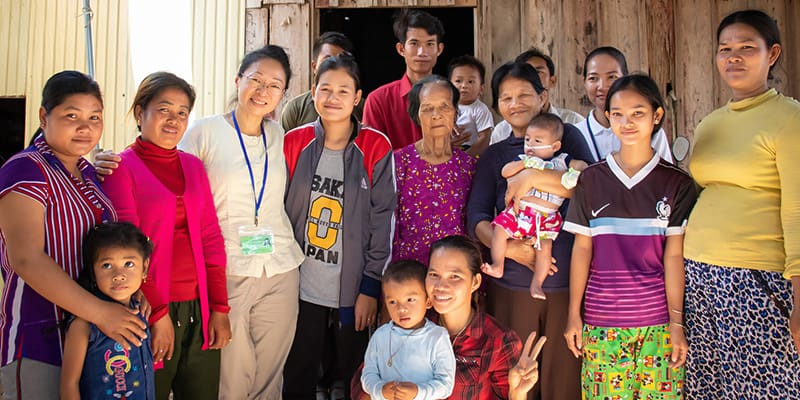A cleft lip-palate is when the lip and/or roof of a child’s mouth has not formed properly during pregnancy. A raft of specialists are needed to repair a cleft fully, providing treatment throughout the course of a child’s life. Despite a cleft being one of the most common birth defects worldwide, the need for ongoing, highly specialised care is one of the main reasons why children in low-resource countries never have their cleft successfully repaired.
Angkor Hospital for Children is one of the only facilities offering specialised cleft care outside of the capital city of Phnom Penh. During the first week of each month, dozens of children with clefts visit AHC for their follow-up appointments. A multidisciplinary team of specialists, known as the ‘Cleft Squad’, work in unison to provide all facets of holistic treatment needed to repair a cleft lip and palate.
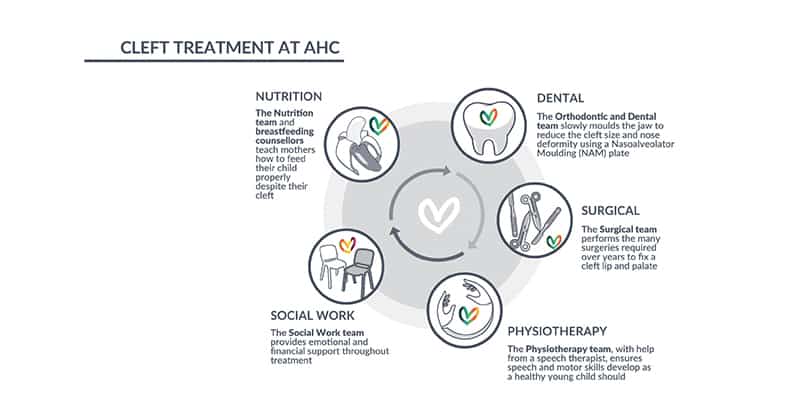
Meet the team charged with caring for cleft patients, like Narith. The ‘Cleft Squad’ will see the same patient for years as the child traverses the treatment journey. The team ensures holistic care beyond the cosmetic repair of the cleft, to include the emotional, social, economic, and spiritual needs of the child and their family.
PHANNSY, NUTRITIONIST & BREASTFEEDING COUNSELLOR
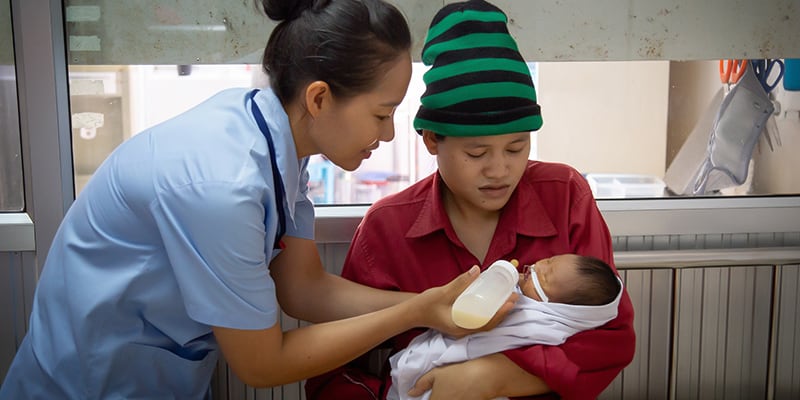
Phannsy Sroeu, and her team of Nutrition nurses and Breastfeeding counsellors are the first specialists to visit a cleft patient when they arrive at AHC. Nutrition and breastfeeding counselling is a crucial element to cleft care because of the major feeding difficulties caused by the gap in the lip and roof of the mouth, making breastfeeding impossible. Phannsy teaches mothers how to use a breast pump and bottle-feed their child.
“A cleft patient needs to gain enough weight before they can have surgery”, says Phannsy, “otherwise they will not be strong enough to undergo the procedure”. Without the intervention from Phannsy and her team, cleft babies cannot get the important nutrients they need from their mother’s breastmilk. The Nutrition team meet cleft patients every month to monitor the child’s weight – seeing them grow from small, new-born babies to healthy young children.
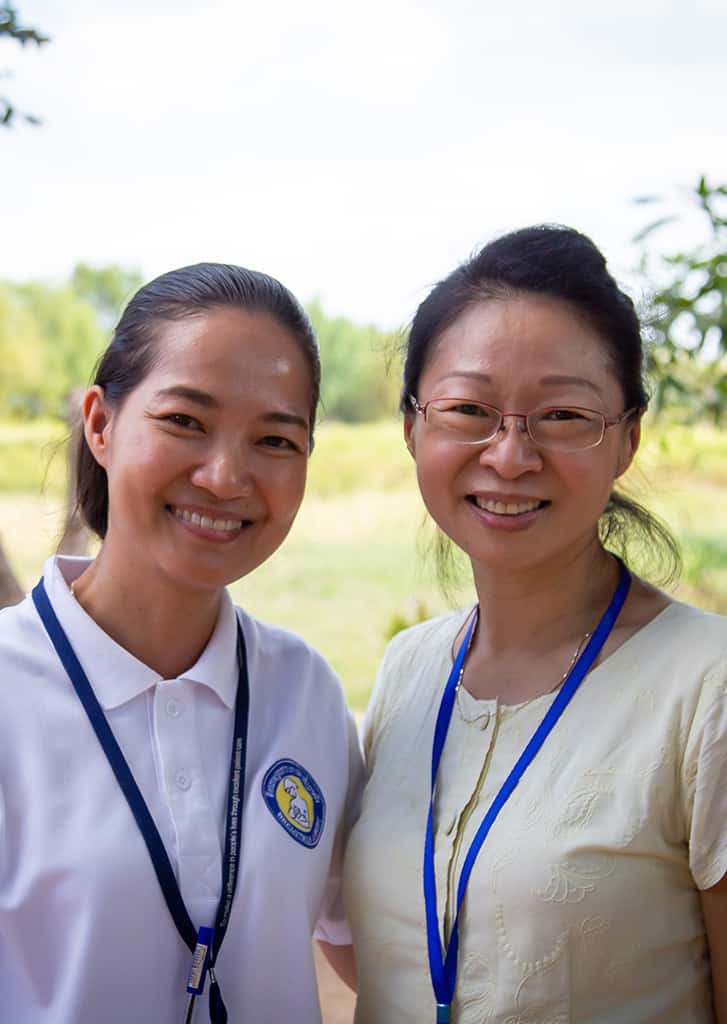
DR CHERN CHERN, ORTHODONTIST VOLUNTEER

Dr Chern Chern has been volunteering at AHC since 2017. As an orthodontist specialising in clefts, she has been instrumental in the development of the ‘Cleft Squad’. Each month she visits AHC to treat cleft patients. For over nine years she has been treating patients with clefts in Phnom Penh. She was drawn to AHC to help develop a centre for cleft care outside of the capital that would service rural Cambodian children who currently have little access to cleft care.
A major development Dr Chern Chern, and AHC’s Dr Bora, have brought to AHC is the Naso-Alveolar Moulding (NAM) plate treatment. This is a customised plastic plate inserted into a child’s mouth, which the dental team makes by hand on-site, so the plate fits perfectly into the unique mouth of each child’s cleft. The NAM plate acts as the roof of the child’s mouth allowing them to create suction and breastfeed effectively, helping the Nutrition team in their work. It also reshapes the child’s gums, lip and nostrils of the child, similar to the way dental braces reshape a child’s teeth. This means the size of the cleft lip-palate reduces slowly over time, and allows for a more successful surgery.
DR BOU NAREN, DENTIST
A cleft patient will need hundreds of visits to the dentist in their life. Their teeth are often missing, misshaped or aligned at unnatural angles. Dr Bou Naren is the head of the Dental team at AHC. Her team work closely with Dr Chern Chern to realign a child’s teeth.
“Often we have to extract extra teeth that the child might have at birth before the child can wear the NAM plate”, says Dr Naren, “we also provide dental health education to the families”. These are all important steps to the child’s development, helping a child to feed, talk, and smile properly. Dr Naren is assisted closely in the dental clinic by Dr Bora Sopheak and Nareth Lim.

DR SAR VUTHY, SURGEON
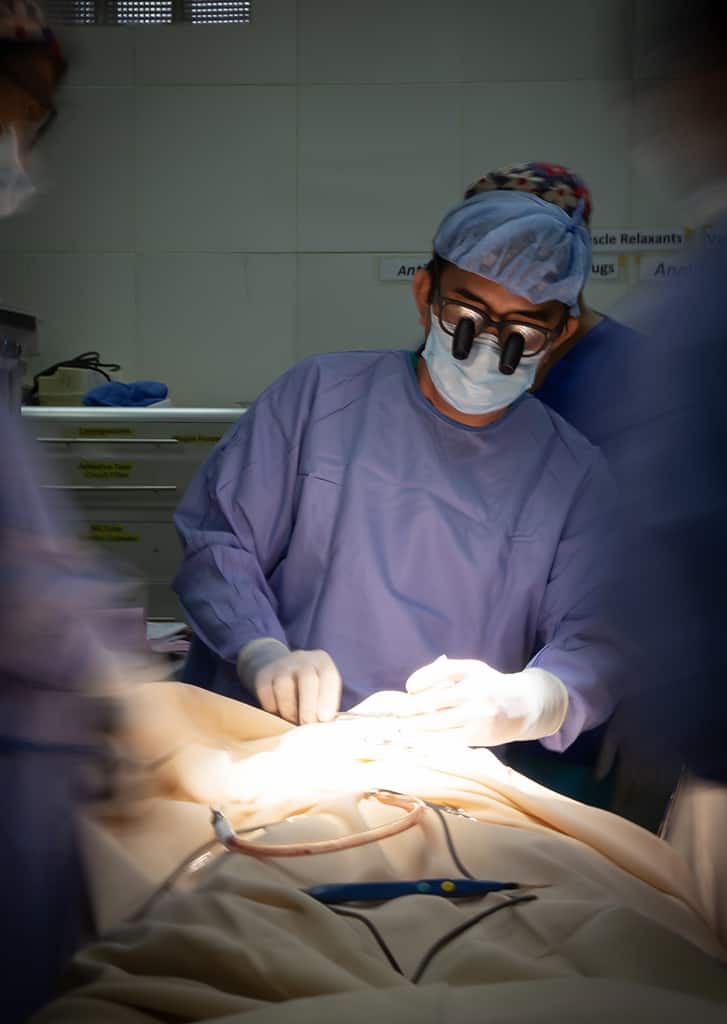
Dr Sar Vuthy has the role of surgically repairing the cleft lip and palate of patients.
The surgery itself requires incredible dexterity on the part of the surgeon. They are required to carefully reconstruct a child’s mouth, which can often be severely deformed, especially if a child has not been receiving treatment from birth. This leads to their cleft becoming further enlarged.
Dr Vuthy works closely with the Nutrition, Orthodontic and Dental teams to ensure a cleft patient is prepared for surgery. The first surgery to repair the cleft lip of a child will usually take place after six months of treatment at AHC. Dr Vuthy will carefully stitch together both sides of the child’s lip to close the gap. This is a significant step in the treatment process, giving the child a healthy appearance.
The surgical repair of a cleft palate takes place over multiple surgeries for the next years of a child’s life. Bone is taken from the child’s hip and grafted to the roof of the mouth. This bone will slowly fuse into the child’s jawbone, replacing the gap that was previously there.
“Although cleft surgery is a big leap forward in the child’s development, I would not be able to do my work without the earlier work of the Nutrition, Orthodontic, and Dental teams”. – Dr Sar Vuthy
SIM SOPHEARIN, SOCIAL WORKER

Every patient that arrives at AHC is entitled to seek treatment from AHC’s Medical Social Work Unit. Sim Sophearin and his team work closely with the dozens of cleft families who visit AHC each month. Children with clefts are subject to social discrimination and stigmatisation, which affects both the child and family’s mental health.
“A big part of the treatment process is group counselling sessions where we collect all the cleft families together”, says Sophearin. “These sessions allow for peer-to-peer learning about the struggles of living with a cleft and the ways to overcome them”.
Sophearin and his team also provide financial support to the families who often travel from impoverished rural communities.
TAN SETHY, PHYSIOTHERAPIST
A child with a cleft not only has issues with their teeth and feeding, but they also have difficulties with speech and swallowing. Once they receive surgery, they have to adjust to speaking with a newly formed mouth. Tan Sethy, the Head of AHC’s Physiotherapy Unit, meets with each child after every surgery, and numerous other times over the course of many years, to help with their development and rehabilitation. Sethy, with help from a trained speech therapist, treats the child’s speech and swallowing problems by developing the muscles and movements needed to produce speech sounds clearly.

Each member of the ‘Cleft Squad’ provides an important service. However, each member in isolation would be unable to fix a cleft. By working collaboratively and through constant communication, together they are able to ensure complete cleft care for the patient. Over time, after countless visits to the hospital, multiple surgeries, and years of rehabilitation therapy, a child will grow to have little to no sign of the severe deformity they were born with.
Our continued mission is to ensure that essential health care for children in Cambodia remains available during this global pandemic – leaving no child unwell.
